 We dare say, this is one of the best publications ever released on the subject of the ship model making and this is for sure a wonderful choice for all people interested in ship modeling. The author provides even more information than one would actually need on the ships, starting from the construction and up to the salvage including absolutely everything that is in between.
The text is perfectly written and very reader friendly, and is supplemented with the numerous prints and informative drawings, that would be appreciated by the modelers. The details provided by the author are actually quite hard to find in the other volumes of this kind, that is why it is recommended to have a copy of this book.
The exploded views are just brilliant and so helpful since they provide additional view and information. Having gone through the content of this volume, you will be able to start building the ship models featuring the historical accuracy which, in turn, required knowledge of the historical details, and all of them can be found readily available in the pages of this book. Make sure you have got your copy of it, take your time reading it, get prepared, and start – you will not regret getting into this.
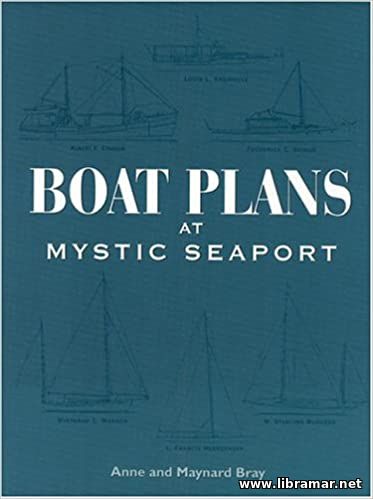 You are all encouraged to have a close look into this nice volume compiled by one of the most respected experts in the field of boat building, as released by the Mystic Seaport. The author did a truly brilliant job, providing interested readers with the detailed descriptions of the important portion of the whole collection possessed by the Mystic Seaport.
Note that there are numerous text explanations, and all of them are supplemented with the brilliant illustrations so you will actually see how it all looks. There are in total almost hundred-and-thirty boat designs dealt with in the volume, each of them very interesting for those who are fond of the sea, including ship model makers. The collection is truly impressive – more that hundred and twenty different ship designs supplemented with the detailed and clear descriptions and images.
The perfect commentaries provided by Maynard Bray are invaluable and cover every single aspect of the design. We definitely recommend the present publication and advise our visitors to make sure they have their copy of the volume, taking into account the wealth of useful information it provides in a very easy to understood and fascinating manner.
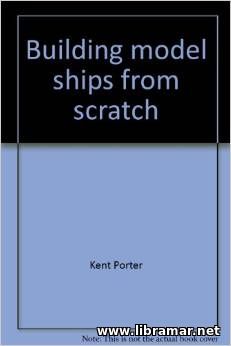 At one time or another you may have looked at ad elaborately detailed model of a sailing ship, built from scratch! and thought. "Wow! Wish I could do that. But I know it's too hard". It's much easier than you would think—and that is the point of this book. Building fro scratch is not usually as easy as building a shira model from a plastic kit, of course, but the rewards are actually proportional to the efforts that you will put into it.
Viewed as a finished work, a ship model appears astonishingly complex, but the construction itself is done one easy step at a time. The model is actually an accumulation on tiny details executed with loving care It does not require tremendous skill to build a ship from scratch, nor even inordinate manual dexterity. Anyone with a reasonable amount of patience and average ability with the hands can turn out a magnificent piece of artwork.
Taking all above into account, we would definitely recommend the present publication to the professional ship modelers as well as to the modeling enthusiasts and anyone with the interest in the naval history and vessels of the past times - there is no doubt that they will all find the content of this volume practical and interesting.
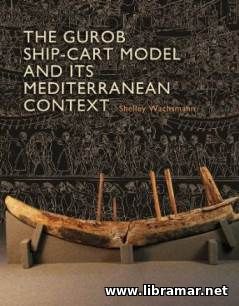 The content of this book was prepared by the recognized expert Shelley Wachsmann providing readers with a remarkably rich and deep study of the vessels of the historical period starting from the closing years of the Bronze Age and up to the beginning of the Iron Age, together with the detailed analysis of their cultural and ethnic context.
The volume has been illustrated with more than two hundred photographs and supplemented with the informative annexes and appendixes. There is a glossary of terms included in the book for easy reference. An excellent volume for all ship model makers from newcomers to the professionals as well as to the naval history enthusiasts. The volume provides so much useful information that is quite difficult to find in the other publications.
In short, we would say that the present volume will offer the readers a broad range of the insights and a good evidence for the linkages that used to be there between the people and traditions of the Mediterranean. It has already been well accepted worldwide being treated as a very valuable asset for the people dealing with the different aspects of the cultural changes in the subject area and in the above stated period of time.
 The publication has been found to be a real reference standard for the model construction, according to many reviews by the interested readers from all around the world. It is deservedly treated as a Bible for all ship model builders. Just follow the instructions and tips provided in the pages of this popular publication and you cannot go wrong.
The content of this volume has been originally written about the construction of the boat models done by the author himself, i.e. the brigantine "Leon", and within this boo the author is following the whole construction process starting from the plans of the brigantine and up to the mounting the ready model on the base, ready for the subsequent glass care. Apart from this one, the book is covering many other methods of making different components of the ship models and each of them has been addressed in detail making it easy for the builders to perform themselves.
Note that the publication was written for the model builders possessing quite limited construction facilities and tools. Particularly recommended to the newcomers to the world of model making; however, the experienced ship or boat model makers will also find it very useful and interesting.
 The present publication is a real windfall for the ship modelers. Bill Shoulder, the author of the book will describe the construction of the model of the famous "Speedy" - note that the volume is prepared and aimed at the "scratch" model makers who normally work from the very basic drawings; however, the content of the book will be of equal interest for the builders who use the kit of parts.
The scale applied is 1 to 48and the efforts of the maker will eventually result in a model having a hull of 18 inches in length while the overall length of the rigged cutter and the height are approximately 30 inches. The vessel is carvel built and has eight guns carried on board. You must be aware that some of those cutters were built clench, however by the period addressed in the book, i.e. 1820s, carvel construction was a bit more usual.
In short, if you are a ship modeling enthusiast, does not matter professional or just a newcomer, have a look into this publication and who knows, maybe you will make a decision to go though the content very carefully and start making your own copy of the model - yes, it is absolutely possible, you only have to follow all the instructions provided for you in the pages of this publication.
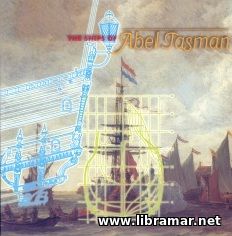 This content of the present book was prepared for the ship model builders and furthermore for any person who are willing to form a general idea of some of the types of ships, which our ancestors used to navigate the seas. It is a fortuitous spin-off from a commission by a group of Dutchmen emigrated to New Zealand, to build two historic ship models.
On the occasion of the 350th anniversary of the discovery of the island by Abel Tasman, they made a decision to offer these two model ships of the daring seafarer to the newly opened Hobson's Wharf Maritime Museum located in Auckland. Reconstructions of past vessel do help people to form a visual image of Dutch nautical history.
The book is remarkably comprehensive and will be greatly appreciated by the ship model makers and naval historians who will discover a true wealth of useful historical and technical information in a single volume. The text of the volume is a result of the cooperation of ship model maker and draughtsman who followed the process and recorded each step. Have a look and you be impressed.
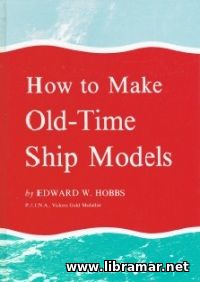 With the passing of the years public interest in old time sailing ships is on the increase, as witness the preservation of our own Victory—Nelson's flagship, in Portsmouth, the original Cutty Sark in Greenwich, while other sea-faring nations are not behind hand in preserving old ships, for example the Constellation built in 1797 and the'oldest United States warship, now dedicated as a national shrine in Baltimore Harbour.
Full size replicas of famous old ships have been built and sailed, for example, Columbus ship Santa Maria made by the Spanish Government, the Mayflower a joint Anglo-American effort, and the Viking ship which visited several European ports to commemorate the exploits of the Norsemen. Valuable as are these replicas nothing can compare with an authentic original, and in that respect the world has been enriched by the devotion and technical skill of the Swedes in raising the Vasa from the depths of the sea.
The Vasa, the pride and the flagship of the Swedish Navy, foundered in 1628 in Stockholm harbour, and there she remained submerged until 1961; but thanks to northern waters being relatively free from destructive wood-worm, and to the preservative effect of the slime and mud on the sea bed, practically every part of the ship has been recovered including a wealth of superb carving and decorative enrichments as well as guns and other equipment. Thus for the first time it has become possible to personally inspect the shipwrights' art and accomplishments of 300 years ago and thereby adding incontrovertible authority to our knowledge of the subject.
|







